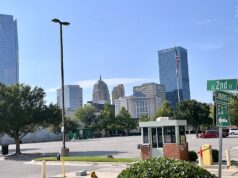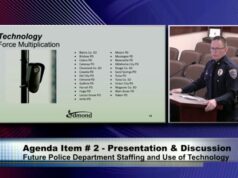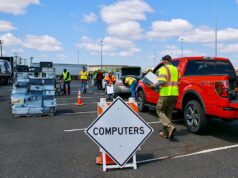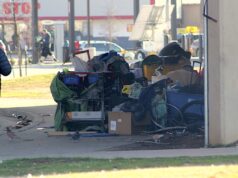
As scrutiny on law enforcement increases following bad publicity about fatal shootings, rampant sexual misconduct and tenuous race relations across the country, police departments have responded with new procedures, training scenarios and community outreach.
In the following NonDoc Q and A, OKC police chief Bill Citty addresses his department’s new body cam procedures, race relations in light of the Daniel Holtzclaw trial, and gun laws.
In the wake of the killing of Michael Brown in Ferguson, Mo., the OKCPD began a trial of different body cam systems. Which system did the OKCPD choose, and why?
OKCPD had been evaluating body-worn cameras and the costs prior to Ferguson with no immediate plans for implementation. The Ferguson incident did expedite our implementation plans, as it did for most agencies.
City of Oklahoma City did a request for proposal and selected three vendors for testing. One vendor, WatchGuard, was selected based on qualifying factors such as ease of use, clarity of the video and sound, as well as costs related to the cameras and storage.
How many officers wear body cameras currently, and what percent of the total police force is that? How often are they worn?
The implementation of body cameras is still ongoing. OKCPD will begin the implementation with a 100-camera pilot program. The plan and preference will be to outfit all first responders (uniformed officers in the field), which is approximately 700 officers.
Other cities that have employed body cams have recently faced criticism for a lack of formalized guidelines regarding their use. Does OKCPD have written guidelines for using body cameras? Are there clear guidelines for how officers who do not follow body camera policy should be disciplined?
Policies and procedures for the utilization of body cameras are in place and clearly state how and when the cameras will be used. Officers will be held accountable for our policies and procedures for the use of the cameras. (See document below.)
 Loading...
Loading...
What’s the procedure for officers submitting camera footage? At the end of each shift, for example?
Systems are different depending on the vendor. The product we are using allows the officers to download footage throughout their shift in their vehicle.
Are officers able to turn the recordings on and off or otherwise review/edit footage? How long is footage stored, and how?
Yes, our procedures address when the officers may turn the recordings off and when they must be turned on. Storage time varies depending on the event. The footage will be kept on in-house City servers.
Are there procedures in place for the public or press obtaining a copy of body cam footage in the wake of a violent incident?
Yes. The Oklahoma Open Records Act addresses video footage created by law enforcement. The media and public need only make a request through either our Records Bureau (public) or Office of Media Relations (media).
RELATED COMMENTARY
“Rape, race and resistance: OKC artists seek justice” by Grace E. Franklin
A recent CNN poll found about 19 percent of African Americans in the U.S. report having “unfair dealings with police.” Given the undeniable racial overtones present in the Holtzclaw case, how has the trial affected relations between minorities in OKC and law enforcement personnel?
We continue to actively work with various community organizations representing minorities in OKC on the ways we can improve our relationship with all citizens. Our approach on Holtzclaw has been one of openness and transparency. If anything, this unfortunate case has helped us address areas needing improvement in minority relations.
You seem pretty well respected in the community, and you have openly discussed a need for better regulation of firearms. What is the department’s current position on gun access, and what is OKCPD doing to address easy access to firearms by felons, terrorists and the mentally unstable?
The police department enforces existing state laws and city ordinances dealing with firearms. Regrettably, federal and state laws do not provide enough regulation of firearms that would benefit law enforcement with the tools to combat much of the violent crime associated with the easy access. We do aggressively work with federal and state prosecutors in pursuing firearm-related charges associated with possession of firearms after former convictions of felonies and in the commission of felony crimes.
What are some other preventive measures OKCPD has undertaken to either improve community-officer relations or reduce incidents of unnecessary force against civilians?
OKCPD has implemented various types of training relating to de-escalation, minority relations and communications. We have plans to also implement other biased-based training for all officers. We also constantly evaluate our policy and procedures that hold officers accountable for how we engage and provide public safety services to our citizens.






















